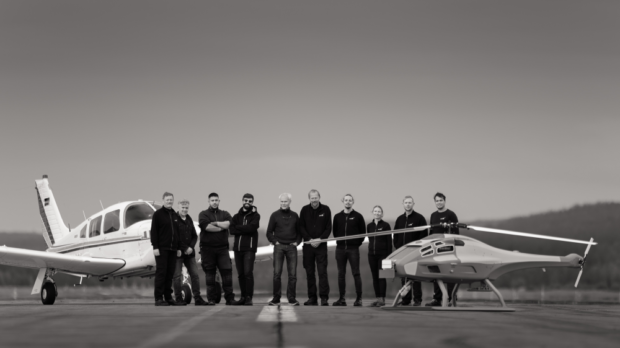UMS SKELDAR successfully performed live flight demonstrations using an innovative Detect and Avoid System capable of automatically manoeuvring the UA around intruder aircraft.
The demonstrations have proven the capability of the system when it encountered both cooperative and non-cooperative collision course scenarios as part of the European Detect and Avoid System development, led by Saab.
The demonstrations have shown the real-world capabilities of the Detect and Avoid (DAA) System on-board the SKELDAR V-200 and included live intruder encounters made by a crewed lightweight aircraft. The system used is based on the European DAA concept and technology, which has been developed over many years for both military and civil use. It is currently being further developed in the European Defence Funds program EUDAAS and going through validation as part of the European future of air traffic management programme, SESAR.
Both programmes are considered an integral component to not only advance technological development, but to also prove the safety of Beyond Visual Line of Sight (BVLOS) which in turn would unlock the possibilities for multiple types of civilian UAS operations. The system is also being standardized by the European Organization for Civil Aviation Equipment (EUROCAE). The aim of the entire work is to have a complete working solution with global interoperability.
The project has received funding from the SESAR Joint Undertaking (JU) under grant agreement No 874474, alongside significant support and funding from Saab and national research and development funds. The JU receives support from the European Union’s Horizon 2020 research and innovation programme and the SESAR JU members other than the Union.
UMS SKELDAR’s DAA programme manager, Björn Sjögren explains:
“The Detect and Avoid System is an important step towards the integration of operating several air vehicles, manned and unmanned in the same airspace. It will enable numerous applications in the future where unmanned systems will play a key role in the civilian, law enforcement as well as military sectors. Combining the sensors for detection, such as EO/IR, AIS, ADSB, active and passive radars, are already increasing the situational awareness for the operator. Adding an avoid system that can propose manoeuvres to “remain well clear” from others or engaging automatic manoeuvring in a later stage to avoid collision using and coordinating with known standards adds another security layer for both manned and unmanned vehicles. A DAA system that contributes to safe flights will soon enable UASs to operate safely in shared airspace with both manned and unmanned aircraft, significantly expanding the flexible use of these vehicles and their operations”
“We are delighted to be a part of this ground-breaking programme,” continues Bjorn Sjögren from UMS SKELDAR. “The flight demonstration enabled us to showcase the innovative Detect and Avoid System in a real scenario and was a complete success. This technology will ultimately enable a future of enhanced autonomy and safety in unmanned aviation, with the goal to enable the SKELDAR V-200 to become fully operational in civilian airspace.”
Source: Press Release

